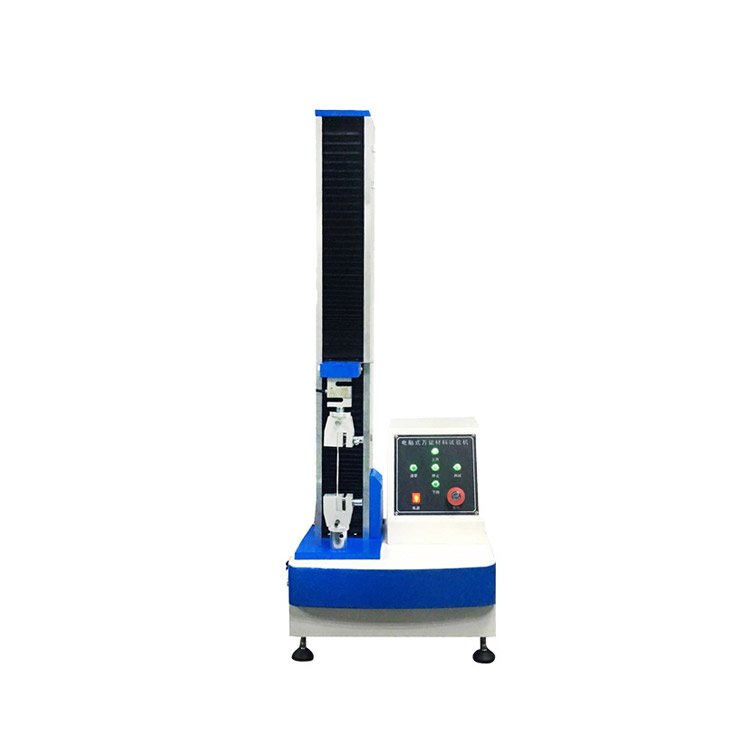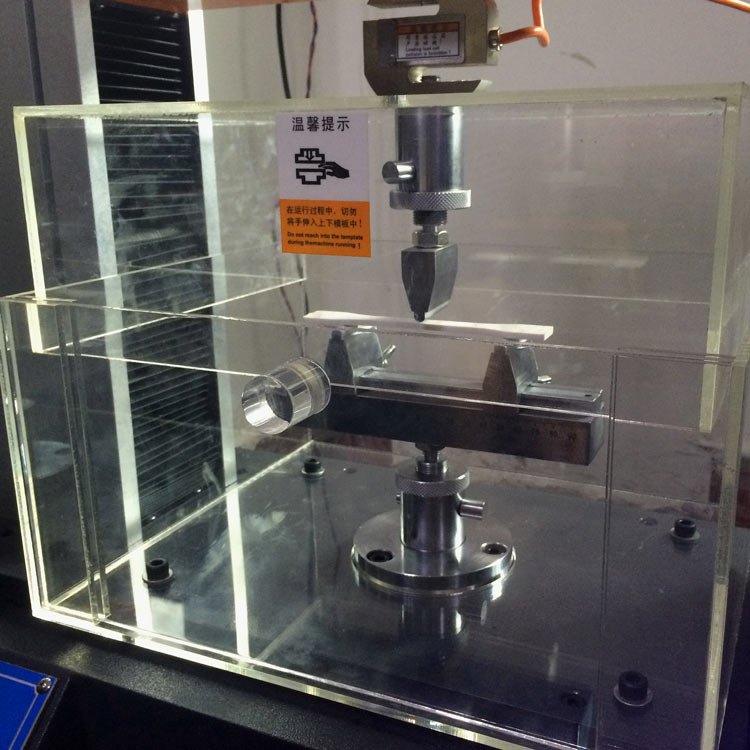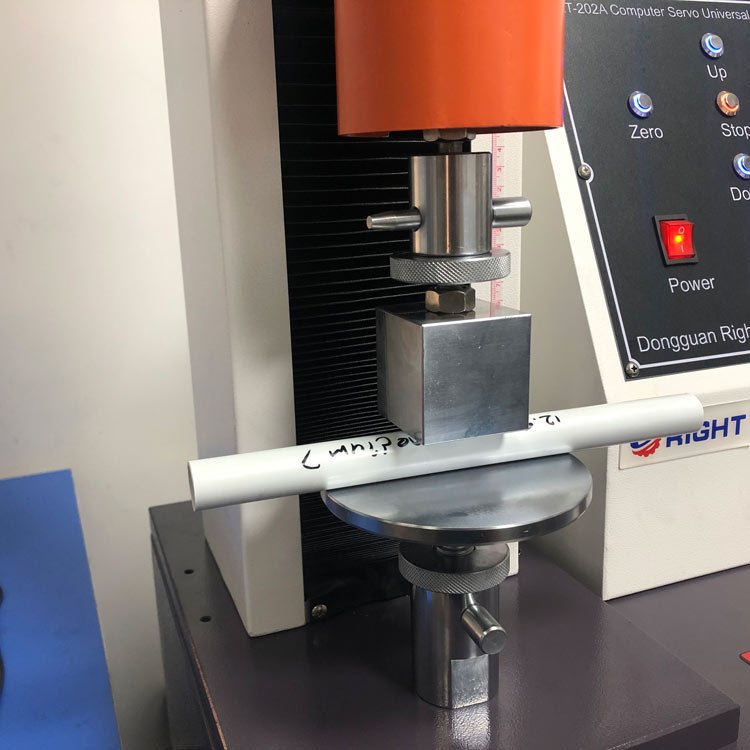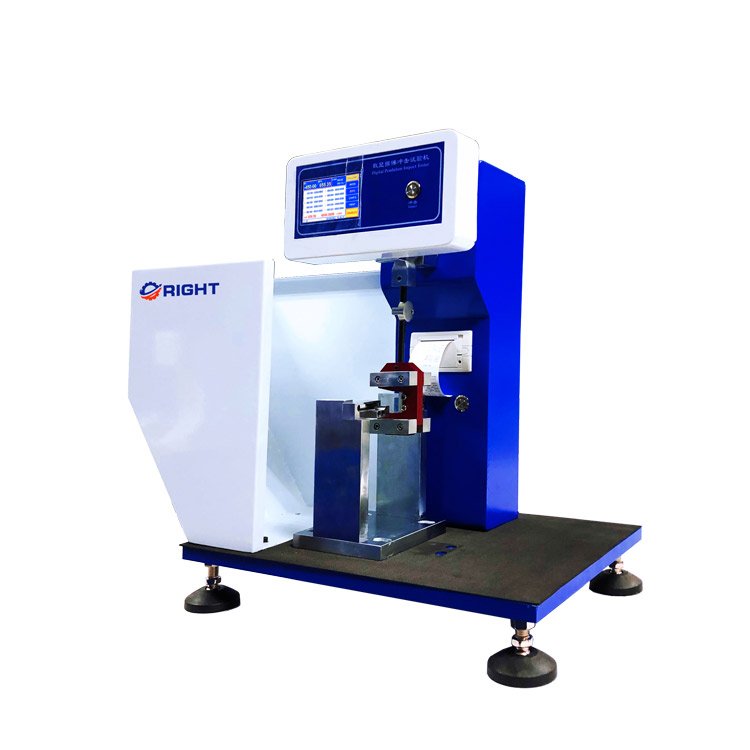1. Factors Affecting Plastic Tensile Testing:
Definition:
Under the specified test temperature, humidity and tensile speed, by applying a tensile load to the longitudinal axis of the plastic sample, the sample is deformed until the material fails. Record the maximum load when the sample fails and the change of the corresponding distance between the marking lines, etc., and draw the stress-strain curve.
(1) Preparation and processing of samples
The tensile test requires a dumbbell-shaped sample;
There are two ways of sample preparation: one is to use raw materials to prepare samples; the other is to sample directly from the product.
There are several methods for making samples from raw materials, including compression molding, injection molding, calendering or blown film molding, etc.;
The test results of samples prepared by different methods are not comparable;
The same sample preparation method requires the same process parameters and process;
After the sample is prepared, it should be placed under the condition of constant temperature and humidity according to GB/T 2918-1998 standard.
(2) Material testing machine
The main influencing factors are: load cell accuracy, speed control accuracy, fixture, coaxiality and data acquisition frequency.
The load cell generally requires the accuracy of the sensor to be within 0.5%.
The stretching speed is required to be smooth and uniform, and a high or low speed will affect the stretching results.
The coaxiality of the testing machine is not good, the tensile displacement will be too large, the tensile strength will be affected sometimes, and the result will be too small.
(3) Test environment
The main factors that affect the results of plastic tensile tests are temperature and humidity. GB/T 2918-1998, the standard laboratory ambient temperature is (23±2)℃, and the relative humidity is 45%~55%.
(4) Operation process
In general, the higher the tensile rate, the greater the yield stress and tensile strength, while the elongation at break will decrease.
During high-speed stretching, the movement of the molecular segments cannot keep up with the speed of the external force, and the plastic exhibits brittle behavior, which is manifested as increased tensile strength and decreased elongation at break.
(5) Data processing
Most of the current material testing machines are controlled by computers, and the data processing has been programmed, but some data still rely on manual testing and calculation, such as sample size, displacement change, elongation calculation and offline testing.
2. Factors affecting plastic bending performance testing:
The first method used to determine the flexural properties of plastics is a three-point loading system, and the second method is a four-point loading system.
(1) Span-to-thickness ratio
When selecting the span-to-thickness ratio, it is necessary to comprehensively consider the comprehensive influencing factors such as shear force, horizontal thrust of the bearing, and indentation of the indenter.
(2) Strain rate
Under the same test thickness, the larger the span, the smaller the strain rate; the larger the test speed, the larger the strain rate.
(3) Loading indenter arc and support arc radius
If the arc radius of the loading indenter is too small, the indenter and the sample quality inspection are not in line contact, but in surface contact; if the indenter radius is too large, the influence of shear force will increase for large spans, and shear fractures are likely to occur.
(4) Temperature
The flexural strengths all decrease with increasing temperature, but to varying degrees.
(5) Influence of operation
Measurement of sample size, adjustment of sample span, line contact and vertical condition of indenter and sample, and adjustment of zero point of deflection value.
3. Factors affecting the compression performance of plastics
Compressive properties describe how a material behaves at lower compressive loads and uniform loading rates.
Compressive properties include elastic modulus, yield stress, deformation beyond the yield point, compressive strength, compressive strain, and slenderness ratio.
In practical applications, compressive loads are not always applied instantaneously, so standard test results that do not take into account the time dependence of plastic stiffness and strength cannot be used as a basis for designing parts.
The test is to place the sample between the two pressure plates of the testing machine, and apply a measurable force of equal magnitude and opposite direction at a constant rate in the direction of the main axis along the two end surfaces of the sample to make the sample along the axis. The direction shortens, while the radial direction increases, resulting in compressive deformation until the specimen ruptures, yields or the specimen deforms to a predetermined number.
(1) Sample material:
For example, the internal stress distribution of the material, the material structure, the forming and processing method of the sample, etc.;
(2) Test conditions:
For example, the shape of the sample, the size of the sample, the surface roughness or friction of the upper and lower platens of the testing machine, and the testing speed.
4. Factors affecting the impact performance test of plastic materials
Impact testing is a test used to evaluate the toughness or resistance to fracture of a material under high-speed loading.
The impact strength of plastic materials is an important performance index in engineering applications, which reflects the ability of different materials to resist damage caused by high-speed impact.
Impact test can be divided into pendulum type (including simply supported beam and cantilever beam type), falling ball (dropping weight) type and high-speed tensile impact test.
Different test methods can be selected for different materials and products with different uses.
Pendulum impact test includes simply supported beam type and Izod beam type.
In both methods, the sample is placed at a specified position on the impact machine, and then the pendulum is dropped freely, so that the sample is broken by the impact bending force. When the sample breaks, the impact energy consumed per unit area or unit width is the impact strength. .
The simply supported beam impact test is a pendulum hitting the center of the simply supported beam test; the cantilever beam is the free end of a notched cantilever beam that is hit with a pendulum.
(1) Sample preparation
Each sample preparation process must meet relevant standards, and different sample preparation methods are not comparable.
(2) Sample size
Specifications should be consistent. The measured values of samples processed by different processing methods are not comparable.
(3) Test environment
The impact strength values all decreased with decreasing temperature. Humidity has an effect on the impact strength of some plastics.
(4) Operation process
For example, the impact velocity, the impact pendulum knife edge and the sample striking surface match. In the simply supported beam impact test, if the sample is not tightly attached to the bracket, it is easy to generate multiple impacts and make the test result inaccurate.
(5) Data processing
Data processing is closely related to the accuracy of test results.




